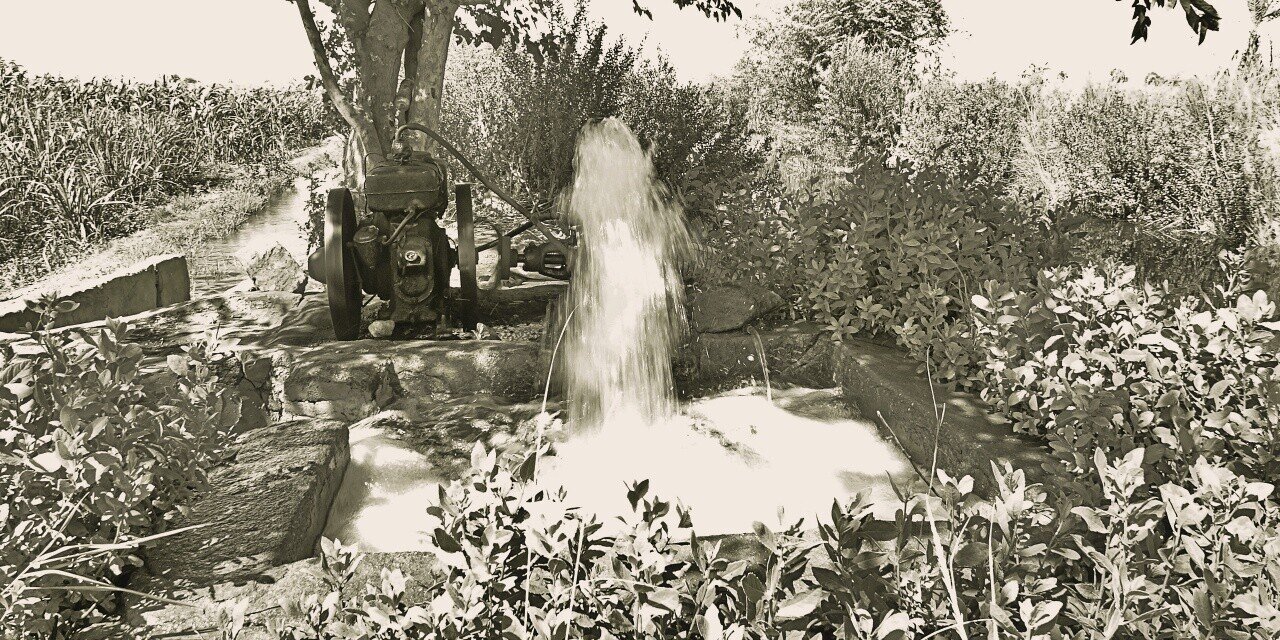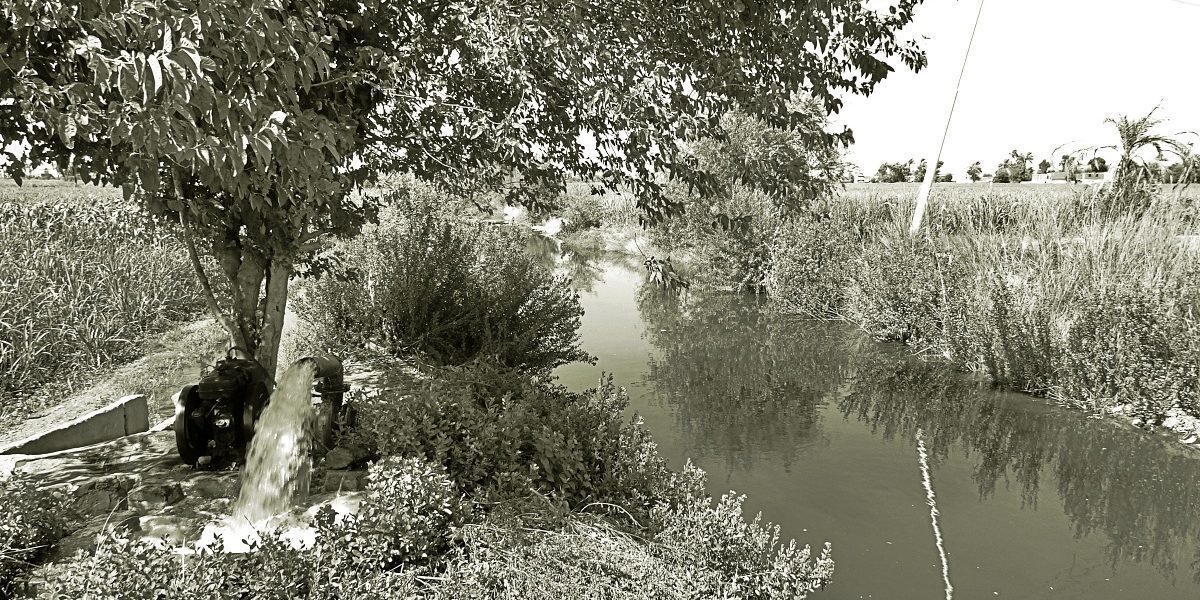Well. You may wonder what is interesting about Egypt’s irrigation system. On the one hand, there are historical aspects that let me draw a bridge to the present. Secondly, it is the whole view of a country that today has to feed 100 million people and at the same time cultivates less than 5% of its available land. In this part of the reportage „In the countryside“ we look at the installed canals, which on one hand lead the water from the Nile to the fields. But there are also other channels that hardly anyone would expect to find in the land of the desert.
Water is the basis of life – always, without exception
It takes enormous amounts of water to cultivate these huge fields and at the same time harvest enough crops. Especially since the soils are cultivated several times a year with sugar cane, mulukheya, bamya, corn or beans. Once again, the situation in Egypt shows how essential water is and that there should be no dispute about it or privatisation of the sources. Not only humans need water, animals do as well. Anyone who believes at this point that a vegetarian lifestyle would help is mistaken. What the animals give off in meat, fat and milk could not be absorbed by a purely vegetarian diet!
My reportage „In the Countryside“ therefore also includes the irrigation system in Egypt with its look at farm life. And again I am fascinated, because …
… the Egyptian canal system began with the pharaohs
Prior to the Suez Canal, which is so important today, the canal was the „Canal of the Pharaohs“, which was built in ancient times. The ancient Egyptians always knew about the importance of water and started building such canals in early times. They ensured the water supply for the people and of course also the cultivation of agricultural products. On my route through the region of Qena, I came across various water channels. Some were filled, others empty, dried out and even overgrown with plants.
Small channel with big effect

The problem: without sufficient water in the Nile, these fields could no longer be irrigated, and enormous crop losses would be the result. Egypt would become increasingly dependent on expensive imports, stability would falter. In Egypt, it’s not just about the water. But it is undoubtedly the key to power, politics and, viewed through a telescope, even potentially gaining land.
The threat to Egypt’s irrigation system: less water
Difficulties could easily arise. Just recently (early July 2021), Egyptian President Sisi warned that the problematic situation with the Ethiopian dam (GERD) could become very serious for Egypt but, above all, highly problematic for the entire Middle East situation. This followed the announcement that Ethiopia wanted to fill the new dam.
Because the giant project is criticised for literally turning off the tap to Egypt. There is already, or has been for years, far less water flowing along the Nile than 20 or 30 years ago. This was also confirmed to me during my visit at the mango farm.
Egypt has its own drainage system

The old canals are being modernised to prevent seepage but also to prevent the water from becoming slimy. 
Nevertheless, the old machines for pumping are still in use according to the old tradition.
And it is that drainage that fascinates here, where nothing grows. Where the sand burns your feet, the asphalt cracks under the heat and Bedouins still carry water on their heads over long paths. Namely, in the Luxor / Red Sea region we are talking about huge desert areas, which in turn are separated by the kilometre-long mountain massif. Only a few times a year is there such heavy rainfall in the region that it floods the land.
Egypt’s irrigation system uses natural resources
The amount of rainwater in Egypt is estimated at 1.6 billion cubic metres per year. These rain masses are collected by the constructed canals and made available for use. The local Bedouin and tribes living in the desert thus also have access to drinking water. Meanwhile, collected rainwater is used to replenish groundwater resources.
Such measures are sensible and important, because salt water is still being extracted for use. However, this must be first desalinated, so the additional rainwater volumes make an important contribution to desalination. You inevitably get the feeling that Egypt is struggling for every drop of water.
This is what a lack of water in the desert feels like
Personally, I know what water scarcity feels like in desert country. IDuring the years I lived in Egypt, the water was brought in by tank trucks, then the tanks on the roof would be filled. A tank with the volume of 4000 litres. During very hot months it could happen that water was used up and one had to wait until the next day to take a shower or wash the dishes.
I experienced the so-called floods in Hurghada in 1996. The sky was almost blood red, the sea created unusually high and wide waves a day before. So strong that I got seasick for the first time. Boats and ships were difficult to navigate under these conditions. Then, the next day, it started to rain, rain, rain. Within one day, the water in the town centre was one metre high.
Cherish what you have – However small it may be
Some of the old dwellings almost broke under the sudden influx of water, which was mainly unable to drain away because there is no sewerage system. The power went out for a week. The food supply was disconnected for several days, and candles also soon ran out. As a European, this situation was surreal. But a lesson that taught me to appreciate not only water.

Having these images in mind, I see the canals for rainwater harvesting from an important perspective. Even if it only rains once or twice a year, it seems reasonable to collect these heavy amounts of water via canals. These start in the southern region of Safaga and run Inland to the Nile. Even for a once-a-year event, every downpour is welcome in the land of the desert. Right they are, the Egyptians. Out of such situations, appreciation grows.

Do you know the reportage „In the Countryside“?
Part one talks about the a mango farm in Egypt. A fascinating reportage by Daniela Shams.
With thoughts back to your own daily life, I would like to encourage you to look: Is the water running when you brush your teeth? Do you water your flower beds with tap water? It might be time to focus on rain barrels now. Not in order to save the world, but to do something meaningful.
Sources: GERD construction May stall because of Financial problems

